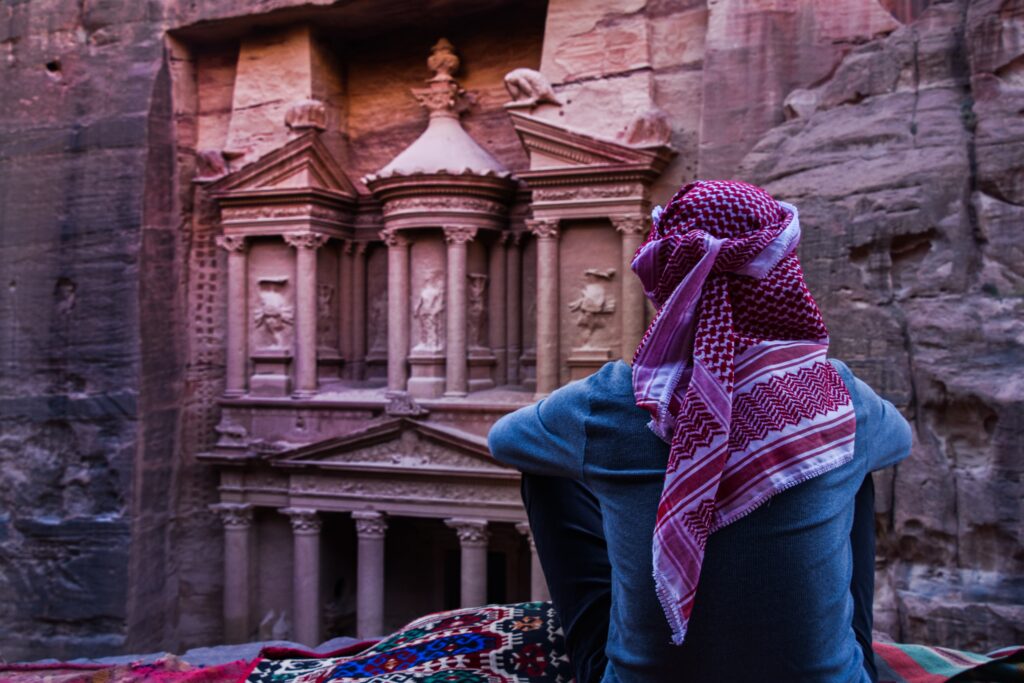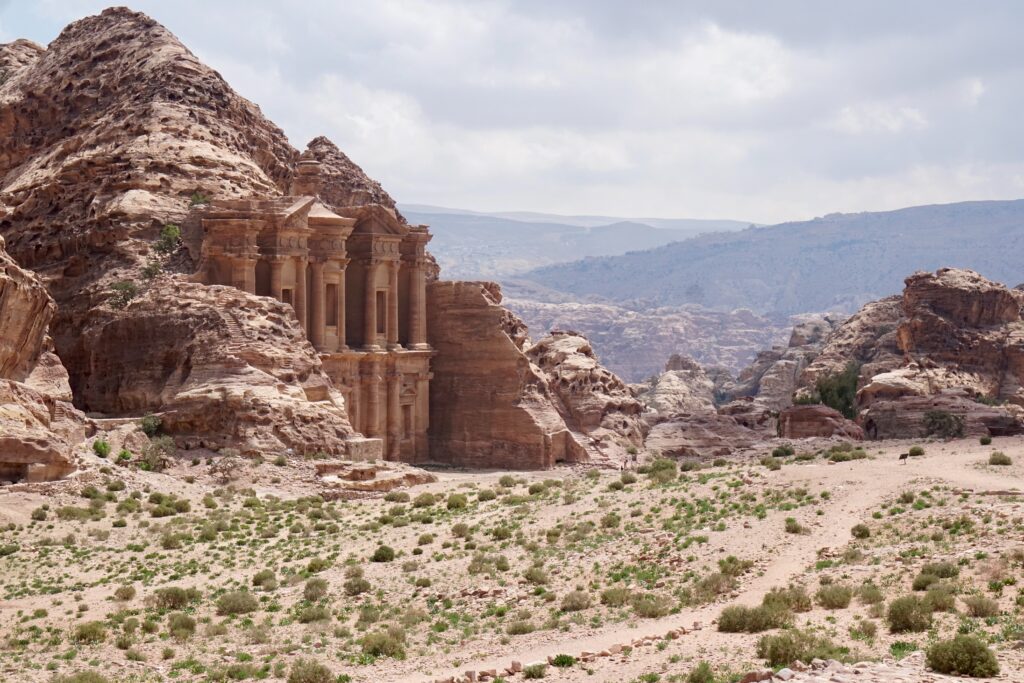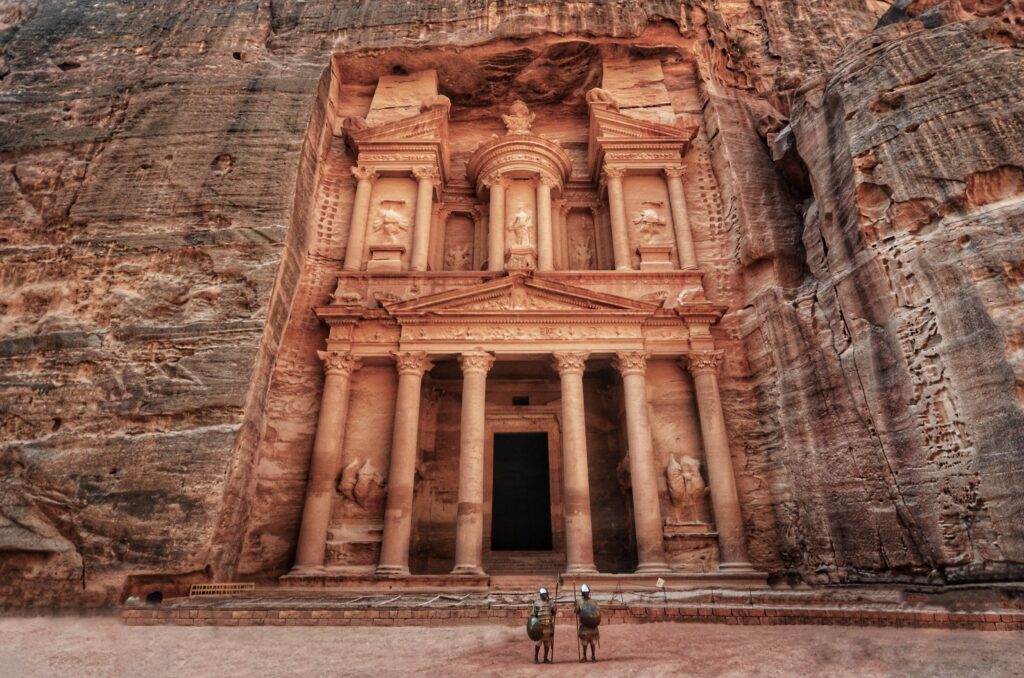Uncovering the Secrets of the Lost City of Petra
Recently updated on January 17, 2025
Total words: 2570

Table Of Content
- Exploring the History of Petra
- Unearthing the Lost City’s Mysteries
- The Famous Structures of Petra
- The People of Petra
- Visiting Petra Today
Introduction
Have you ever dreamed of discovering long-lost secrets of ancient civilizations? Uncovering the Secrets of the Lost City of Petra is your chance to do just that! Petra is an ancient city that lies in the heart of the Jordanian desert, and it’s one of the most iconic archaeological sites in the world. Awe-inspiring tombs, caves, temples, and other structures have been carved into the sandstone cliffs, making it an incredible place to explore. In this article, we’ll take a closer look at the incredible history and culture of Petra, and uncover some of its hidden secrets.
Exploring the History of Petra
The ancient city of Petra is one of the world’s most mysterious and beautiful archaeological sites. Located in modern-day Jordan, this “Lost City” has been a source of fascination for centuries. Its intricate rock-cut architecture and incredible monuments have captivated visitors for generations, and the site’s secrets remain largely unknown.
The History of Petra
The history of Petra dates back thousands of years. It is believed that the city was first settled by the Nabataeans, an Arabian tribe, in the 6th century BCE. The Nabataeans were skilled in engineering and developed the city’s water systems, which allowed them to thrive in the desert environment.
The city reached its peak in the 1st century CE under the rule of King Aretas IV, who made Petra the capital of the Nabataean kingdom. The city was home to more than 30,000 people and was an important trading hub, connecting the Roman Empire with India and China. During this time, Petra greatly flourished and the city was adorned with magnificent monuments carved into the sandstone cliffs.

The Decline of Petra
Unfortunately, Petra’s golden era was short-lived. In the 7th century CE, the city was conquered by the Romans and later by the Byzantines. As trade routes shifted and the city’s strategic importance declined, Petra gradually declined. By the 14th century, the city had been abandoned and most of its inhabitants had moved away.
The Rediscovery of Petra
For centuries, Petra was hidden in the desert, known only to local Bedouin tribes. Its existence was rediscovered by Swiss explorer Johann Ludwig Burckhardt in 1812. Burckhardt was the first Westerner to explore the city and he described its wonders in vivid detail. Since then, Petra has become a popular tourist destination and has been designated as a UNESCO World Heritage Site.
The Secrets of Petra
Although Petra is a popular tourist destination today, many of its secrets remain hidden. Archaeologists have uncovered many of the city’s monuments and tombs, but they have yet to uncover the full history of the city. They have also yet to uncover the truth behind many of the city’s myths and legends.
Petra is an incredible site and a source of fascination for many. Its incredible rock-cut architecture and fascinating history make it a must-visit destination. There is still much to be discovered about Petra, and its secrets remain waiting to be uncovered.
Unearthing the Lost City’s Mysteries
The ancient city of Petra was once a thriving hub of civilization and culture. For centuries it remained hidden away in the desert of Jordan, until it was rediscovered by a Swiss explorer in 1812. Since then, the city has become a source of intrigue and mystery, with archaeologists and historians alike trying to unlock its secrets.
Exploring the Forgotten City
Today, Petra is a major tourist attraction in Jordan, and it continues to draw visitors from all over the world. The site is made up of hundreds of buildings, tombs, and monuments, all carved into the sandstone cliffs of the region. It’s believed that the city was once the capital of the Nabataean Empire, a powerful civilization that flourished between 400 BC and 106 AD.
Uncovering the City’s History
Archaeologists have spent decades studying the city and its monuments, in an effort to uncover the secrets of its past. They’ve discovered a number of artifacts, including coins, pottery, and jewelry, which have helped to shed light on the city’s history. Additionally, they’ve uncovered evidence of an advanced irrigation system, which allowed the Nabataeans to grow crops in the arid environment.

Preserving the City’s Legacy
The city of Petra has been designated a UNESCO World Heritage Site, which means that it’s protected from development and destruction. This designation has allowed archaeologists to continue their work and ensure that the city’s secrets are preserved for future generations.
The City’s Lasting Impact
The city of Petra has become a symbol of strength and resilience. Its ancient monuments stand as a testament to the power of human ingenuity, and it’s a reminder of how civilizations can rise and fall. The city’s legacy will continue to inspire generations to come, and its mysteries will remain unsolved for years to come.
The Famous Structures of Petra
The Lost City of Petra is an ancient city located in present-day Jordan that has been recognized as one of the seven wonders of the world. It is renowned for its unique architecture, which is comprised of numerous structures carved directly into the cliffs. These impressive structures are a testament to the ingenuity of the Nabataeans, who created the city as their capital in the 4th century BC.
The Treasury
The most iconic structure of Petra is the Treasury, which is located at the end of the Siq, a narrow gorge cut into the sandstone cliffs. The Treasury is an elaborate building carved from the rock face and stands at 39 meters high. It is believed to have been a royal tomb, though its exact purpose is still unknown. This structure is a magnificent example of the Nabataean architecture and is intricately decorated with figures of mythological creatures.
The Temple of the Winged Lions
The Temple of the Winged Lions is a Greco-Roman style temple located in the lower city of Petra. It is the largest and best-preserved structure in the city, measuring at almost 50 meters in length. This impressive building is thought to have been dedicated to the Nabataean king Obodas I and is decorated with a series of winged lions. These lions were a symbol of protection and have been found throughout the city, indicating the importance of this deity.
The Great Temple
The Great Temple is another one of Petra’s most impressive structures. It was the largest structure in the city and is believed to have been the religious center of the Nabataeans. It was constructed using a combination of Roman and Greek styles and stands at an impressive 50 meters high. At the front of the temple is an impressive façade decorated with Corinthian columns and intricate carvings.

The Monastery
The Monastery is another well-known structure in Petra. It is located in the upper city and stands at an impressive 45 meters high. It is the second-largest structure in the city and is believed to have been used by the Nabataeans as a place of worship. The façade of the Monastery is decorated with intricate carvings, making it a popular spot for visitors.
The Lost City of Petra is a UNESCO World Heritage Site and is renowned for its unique and impressive structures. From the iconic Treasury to the impressive Monastery, these structures are a testament to the ingenuity of the Nabataeans and provide insight into the history of this ancient city.
The People of Petra
The ancient city of Petra is an archaeological marvel that is deeply rooted in the history of the Middle East. This amazing city was carved out of stone by the Nabataeans, a nomadic people who settled in the region in the sixth century BC. The Nabataeans were a mysterious and sophisticated culture, and their legacy is still visible in the ruins that remain in Petra.
The Nabataeans were a complex people, and their civilization was highly advanced. They were skilled tradesmen, and were well-known for their engineering and construction abilities. They built an incredible network of water systems, which allowed them to survive in the arid desert climate. They also developed a complex system of taxation and trading, which enabled them to become one of the wealthiest and most powerful groups in the region.
The Nabataeans were able to build Petra into an impressive city by taking advantage of the natural landscape. They carved out the city from the red sandstone cliffs, and used the natural formations to create a fortress. They also constructed a number of impressive monuments, such as the Treasury, the Palace, and the Monastery.
The Nabataeans were a highly religious people, and Petra was a center of worship for their gods. They believed in a number of deities, including the god Dushara, who was believed to be the guardian of the city. The Nabataeans also practiced rituals such as sacrifices and offerings, which were often carried out at the temples in Petra.
The Nabataeans were a powerful and influential people, and their influence was felt throughout the region. After a long period of decline, their civilization was destroyed by the Romans in 106 AD. However, their legacy lives on in the ruins of Petra, which are still a popular tourist attraction.
The incredible ruins of Petra are a testament to the skill and ingenuity of the Nabataeans. The city remains one of the most impressive archaeological sites in the world, and is a reminder of the rich history and culture of this ancient people.
Visiting Petra Today
The ancient city of Petra is one of the world’s most incredible archaeological sites, and a visit to the region is an unforgettable experience. Located in Jordan’s southwest desert, the city was built by the Nabataeans over 2,000 years ago and is now a UNESCO World Heritage Site. Today, visitors to Petra can explore the sandstone structures and monuments of this ancient city and discover the secrets of its past.
History of Petra
The city of Petra was founded by the Nabataeans in the 6th century BC, and its location on the major trade routes of the time made it a wealthy and powerful city. The city was ruled by the Nabataeans until it was conquered by the Romans in 106 AD, and then by the Byzantines in the 6th century. In the 12th century, the city was abandoned, and its secrets were forgotten for centuries. It wasn’t until 1812 that the city was rediscovered by Swiss explorer Johann Ludwig Burckhardt.
Exploring the City
Today, visitors to Petra can explore the incredible sandstone structures and monuments that were built by the Nabataeans. The most famous of these is the Treasury, a stunning temple-like structure carved into the rock face. Other sites to explore include the Royal Tombs, the Street of Facades, and the ancient theatre.
For those who want to explore further, there are guided tours of the city, which include stops at off-the-beaten-track sites such as the Monastery, a large temple-like structure located at the top of a steep path. There are also plenty of opportunities to enjoy the stunning views of the surrounding desert and mountains.
Visit Petra Today
A visit to Petra is an incredible experience, and it’s easy to see why it is one of the most popular tourist attractions in the Middle East. The city has a wide range of accommodation options, from luxury hotels to budget guesthouses, so there is something for everyone. A visit to Petra is a great way to learn more about the fascinating history of the region and experience its unique culture.
For those who want to get the most out of their visit, there are plenty of guided tours and activities available. From camel rides to four-wheel drive adventures, there’s something for everyone. For a truly unique experience, visitors can even take a night tour of the city, which includes a visit to the Treasury by candlelight.
Visiting Petra is a once-in-a-lifetime experience, and a great way to uncover the secrets of this ancient city. With its stunning views, fascinating history, and unique culture, Petra is an amazing destination for travelers of all ages.
Conclusion
The Lost City of Petra is one of the most unique and mysterious archaeological sites in the world. From its incredible rock-cut architecture to its vast array of artifacts, Petra has captivated researchers and visitors alike for centuries. The site’s rich history and cultural significance make it a must-see destination, and its secrets still hold the potential to reveal more about the ancient world. This incredible archaeological site will continue to amaze and inspire for generations to come, and its remarkable history and beauty remain unparalleled.
We hope you enjoyed uncovering the Secrets of the Lost City of Petra. From its fascinating history to its stunning architecture, Petra has something for everyone. Whether you’re an archaeologist, an explorer, or a traveler, this ancient city will captivate and awe you. So plan a visit soon and discover the secrets of this magnificent lost city.
1. What is the history behind the Lost City of Petra?
The Lost City of Petra, located in Jordan, is an ancient archaeological site dating back to around 300 BC. It was the capital of the Nabatean Kingdom and is famous for its intricate rock-cut architecture and water conduit system. Petra served as a major trading hub for the silk and spice routes, showcasing a blend of ancient Eastern and Hellenistic architectural styles.
2. How can visitors explore the Lost City of Petra?
Visitors can explore Petra by walking through the Siq, a narrow canyon leading to the iconic Treasury building. Other highlights include the Royal Tombs, the Monastery, and the High Place of Sacrifice. Guided tours are available, or visitors can opt to explore the site independently on foot or by horseback.
3. What are the must-see attractions in the Lost City of Petra?
Must-see attractions in Petra include the Treasury, a stunning facade carved into the rock face; the Monastery, a larger monument with breathtaking views; the Roman Theater, an ancient amphitheater; and the High Place of Sacrifice, offering panoramic views of the city.
4. What is the best time of year to visit the Lost City of Petra?
The best time to visit Petra is during the spring (March to May) and autumn (September to November) when the weather is mild and ideal for exploring the site on foot. Summers can be extremely hot, while winters can be chilly, so planning your visit during the shoulder seasons is recommended.
5. Are there any cultural events or festivals held in the vicinity of Petra?
While Petra itself does not host specific cultural events or festivals, visitors can explore local markets in nearby towns like Wadi Musa, where traditional handicrafts and local cuisine can be experienced. Additionally, Jordan hosts various cultural festivals throughout the year, showcasing music, dance, and culinary delights from the region.